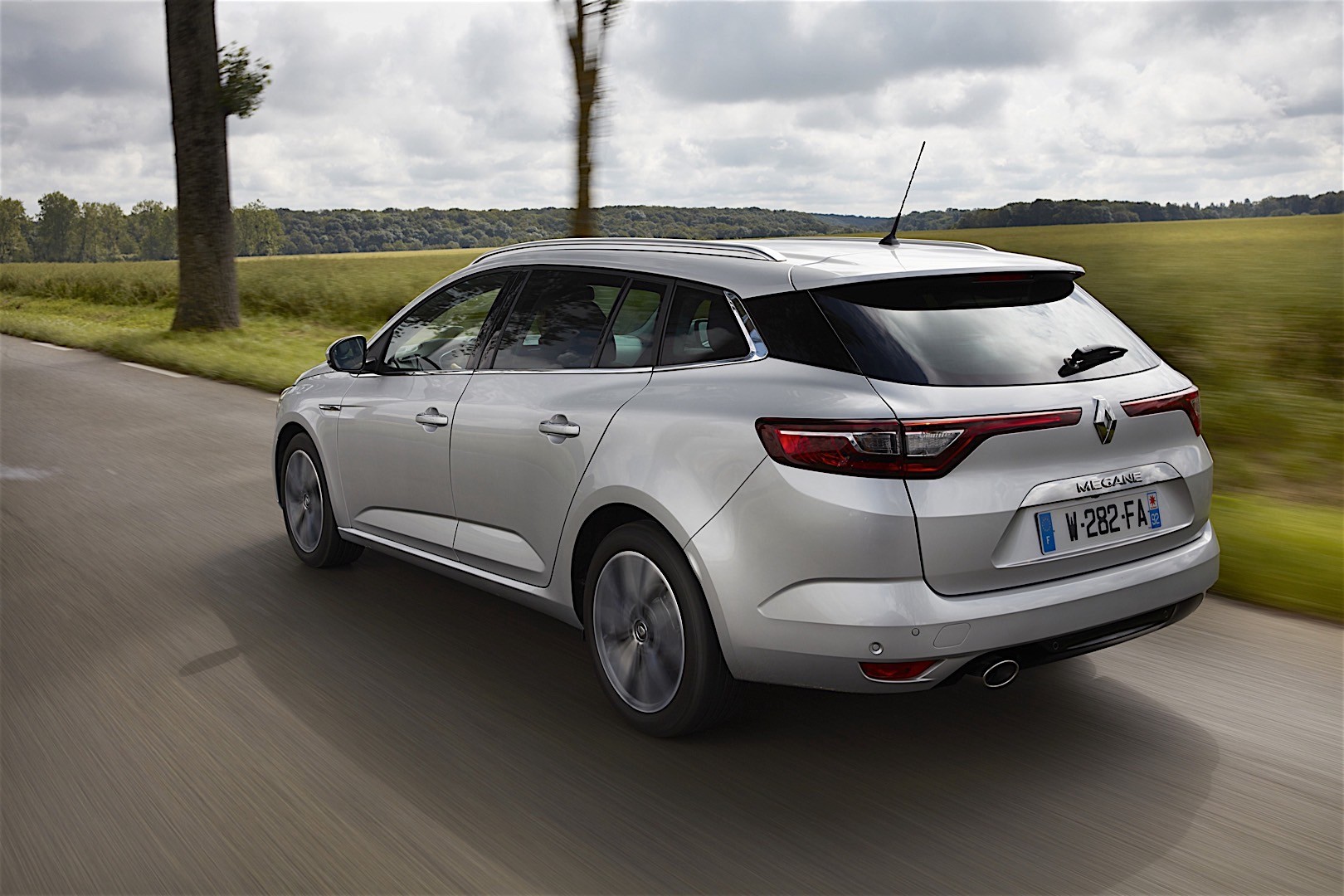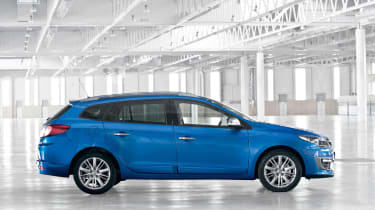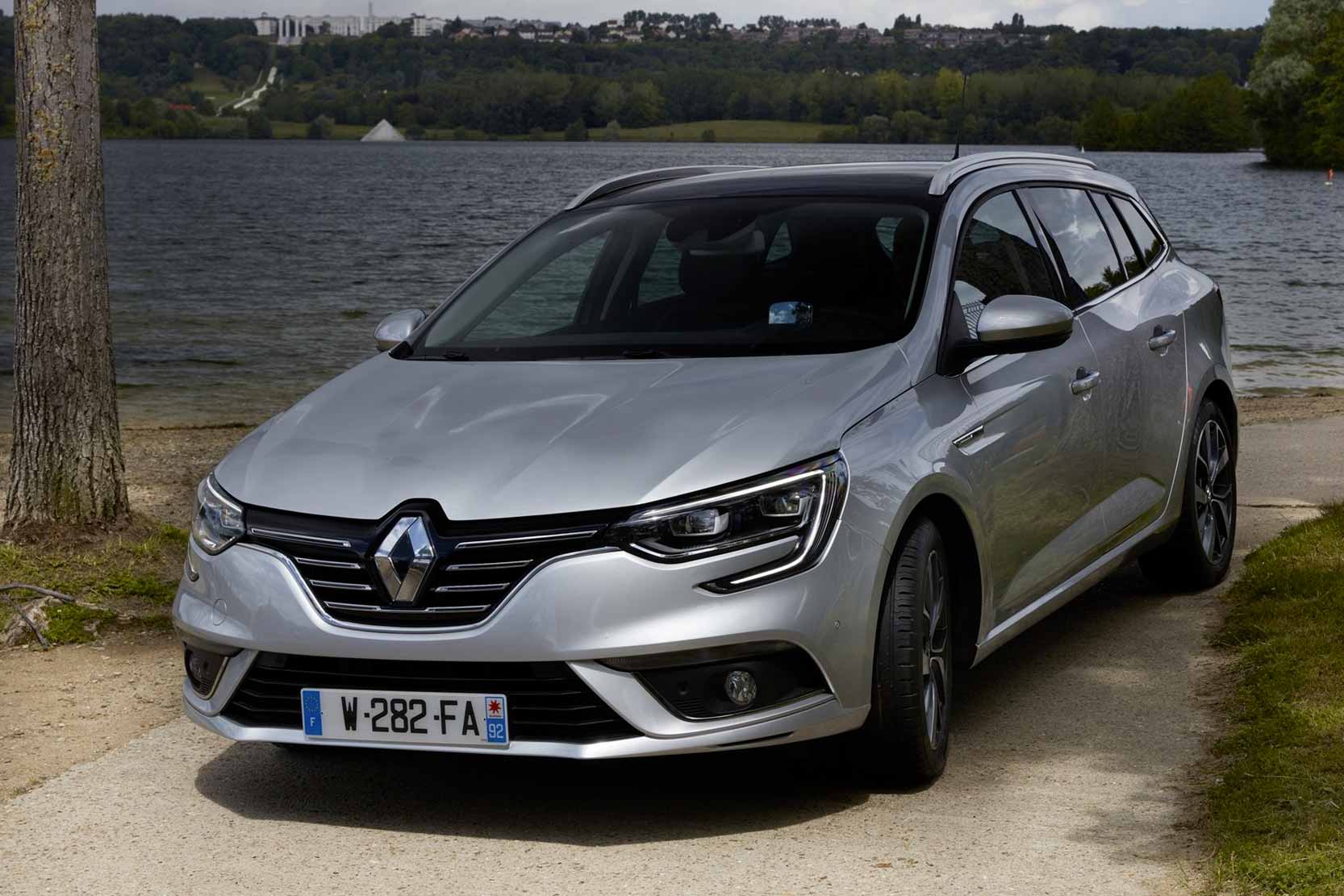


Renault gave us the opportunity to test both ‘sport’ and ‘cup’ suspension configurations on the Mégane RS 280’s launch, as well as both manual and EDC gearboxes – although our impressions on the manual ‘cup’ were confined to the limits of a track, so we’ll have to wait to discuss how the stiffer-suspended car rides on the road. Taking the Megane RS to the limit on track Prices start at £28,995, while a ‘trophy’ version – with 296bhp, 295lb ft, a standard cup chassis and all the must-have options included – is an open secret to join the range before the end of the year. Enlarged 19in wheels fitted with Bridgestone tyres, and uprated lightweight brakes with aluminium hubs saving 1.8kg a corner, are options on ‘cup’ cars. With the latter, you also get a Torsen mechanical slippy diff configured for greater lock-up under power and less drag effect on a trailing throttle than the outgoing Mégane 275’s GKN slippy diff had.

In more familiar vein, you can have the Mégane RS with a slightly softer ‘sport’ suspension tuning (partnered with an electronic brake-actuated torque vectoring system) or firmer ‘cup’ settings. And it’s a claim that seems all the more credible coming from a firm with Renault Sport’s pedigree in chassis tuning than it might be if you heard it anywhere else. Having experimented with adaptive dampers too, Renault’s conclusion was that it could achieve better dynamic performance by combining a good, well-tuned passive damper with a hydraulic bump stop than by spending the equivalent on an adaptive damper. And while they’re commonly fitted to rally cars and the new Mégane uses them at all four corners, the current Clio RS uses them too (on the front axle only) Dieppe’s history with them stretches all the way back to the legendary Clio 182 Trophy of 2005. Described by the company as "a damper within a damper", the hydraulic suspension bump stops are independent fluid-filled shock absorbers that sit on the lower end of the front and rear suspension struts. This isn’t the first Renault Sport product to use the latter. The car’s chassis features two key technical departures: a four-wheel steering system and a set of hydraulic suspension bump stops.

The RS version rides 5mm lower than a Mégane GT and has axle tracks widened by 45mm up front and 30mm at the rear. Told you there was good news.įor suspension, the Mégane RS sticks with struts up front and a torsion beam at the rear, but its front configuration has new geometry and retains Renault Sport’s PerfoHub technology, which reduces kingpin angle offset and therefore better resists torque and bump steer. Unlike in the Clio RS 220 Trophy, then, you needn’t be stuck with two pedals and two paddles if you don’t want them. This third-generation version has a new 1.8-litre turbocharged engine that's smaller and lighter than the old car’s 2.0-litre unit, delivering more power and torque than the Mégane 275 bowed out with – and which can be paired with a choice of six-speed manual or twin-clutch automatic gearboxes. Although it retains front-wheel drive, the fast Mégane has been through an overhaul that would seem every bit as thorough and attentive, on paper, as that of any of its rivals. Some good news would definitely be welcome - and maybe we’re about to get some.


 0 kommentar(er)
0 kommentar(er)
